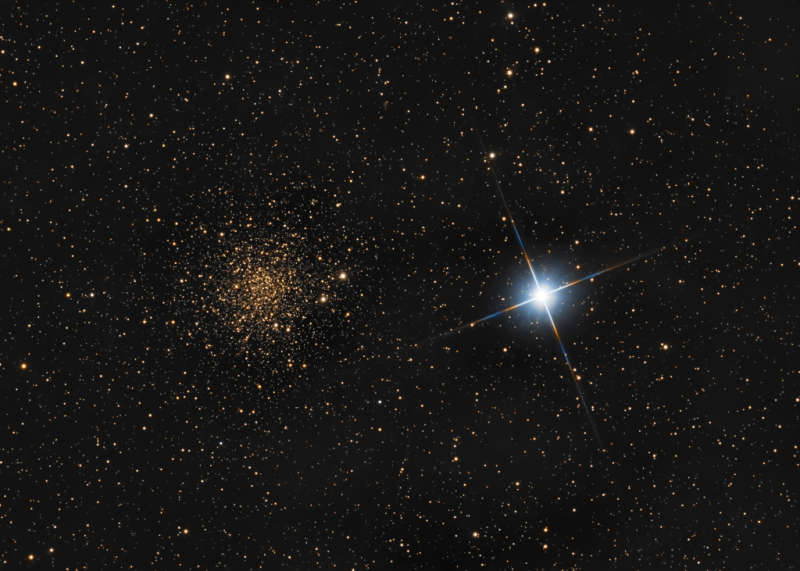
|
Credit & Copyright: Massimo Di Fusco
Explanation:
Most
globular
star clusters
roam the halo of our
Milky Way galaxy, but globular cluster NGC 6366 lies close to the
galactic plane.
About 12,000 light-years away toward the constellation Ophiuchus,
the cluster's starlight
is dimmed and reddened by the Milky Way's interstellar dust
when viewed from planet Earth.
As a result, the
stars
of NGC 6366
look almost golden in
this telescopic scene,
especially when seen next to relatively bright, bluish, and nearby star
47 Ophiuchi.
Compared to the hundred thousand stars or so gravitationally bound in
distant NGC 6366, 47 Oph itself is a binary star system
a mere 100 light-years away.
Still, the
co-orbiting
stars
of 47 Oph are too close together to be individually distinguished in the image.
|
January February March April May June July August September October November December |
| ||||||||||||||||||||||||||||||||||||||||||||||||
NASA Web Site Statements, Warnings, and Disclaimers
NASA Official: Jay Norris. Specific rights apply.
A service of: LHEA at NASA / GSFC
& Michigan Tech. U.
Based on Astronomy Picture
Of the Day
Publications with keywords: globular cluster
Publications with words: globular cluster
See also:
